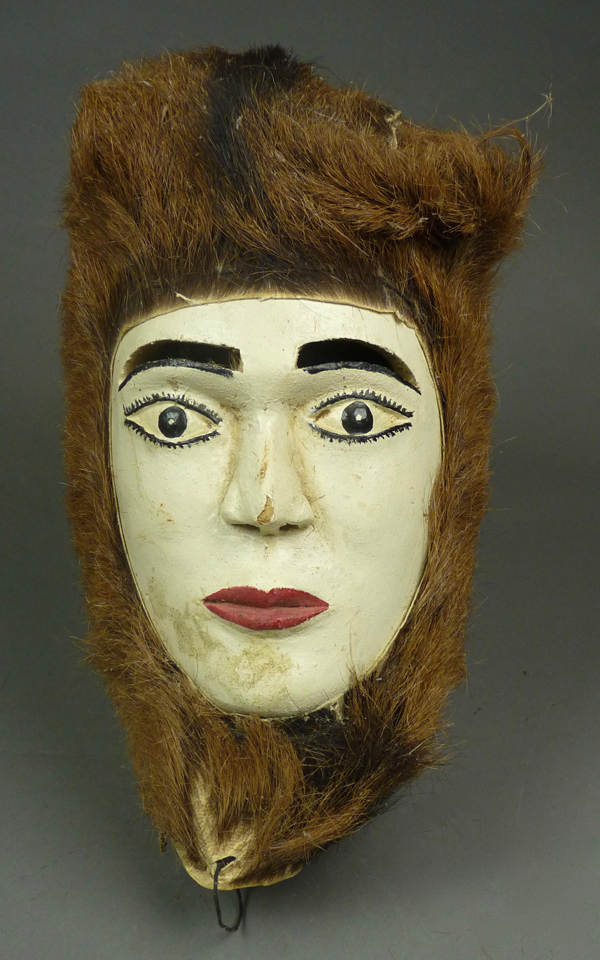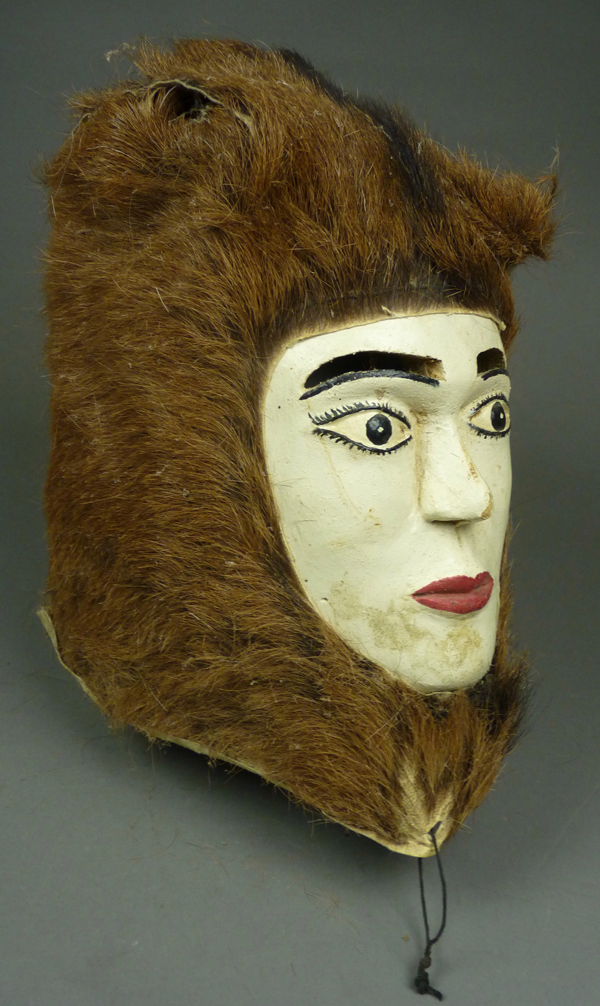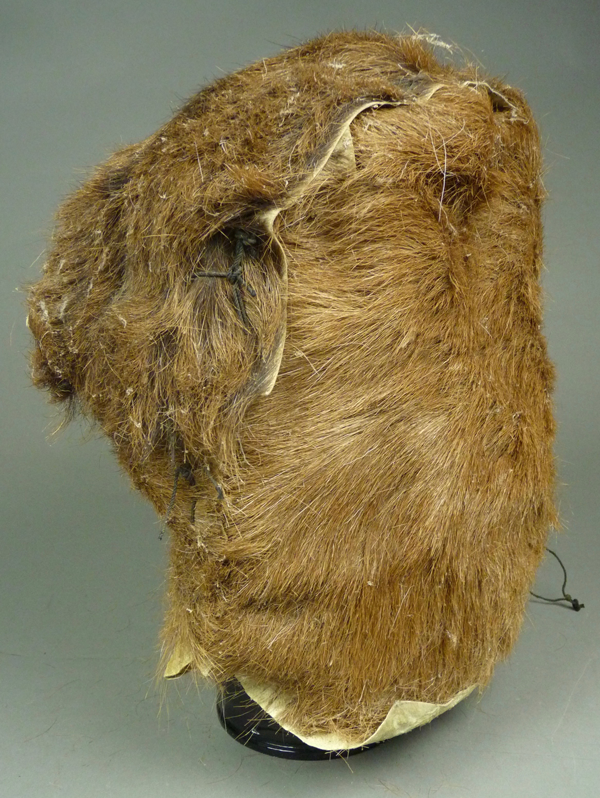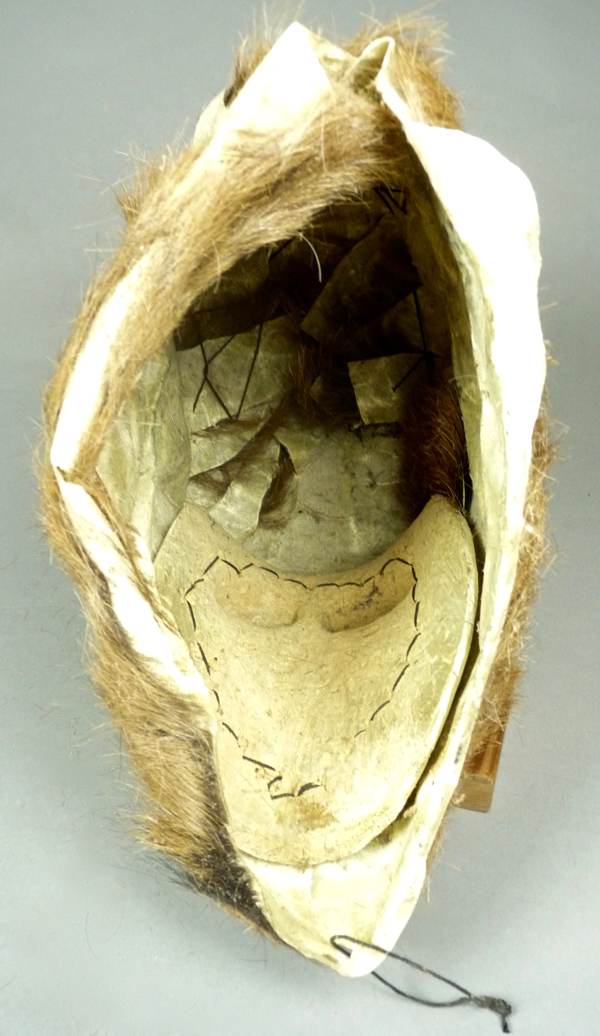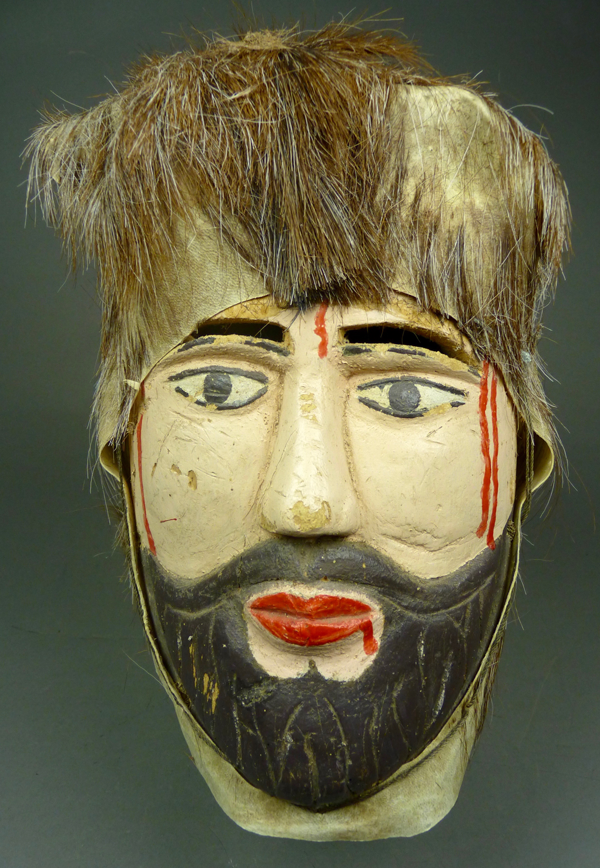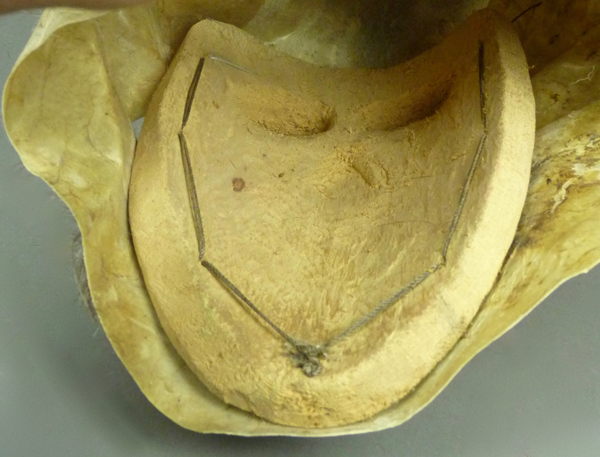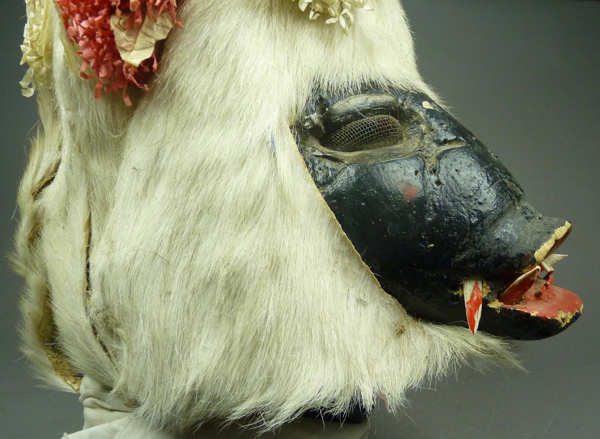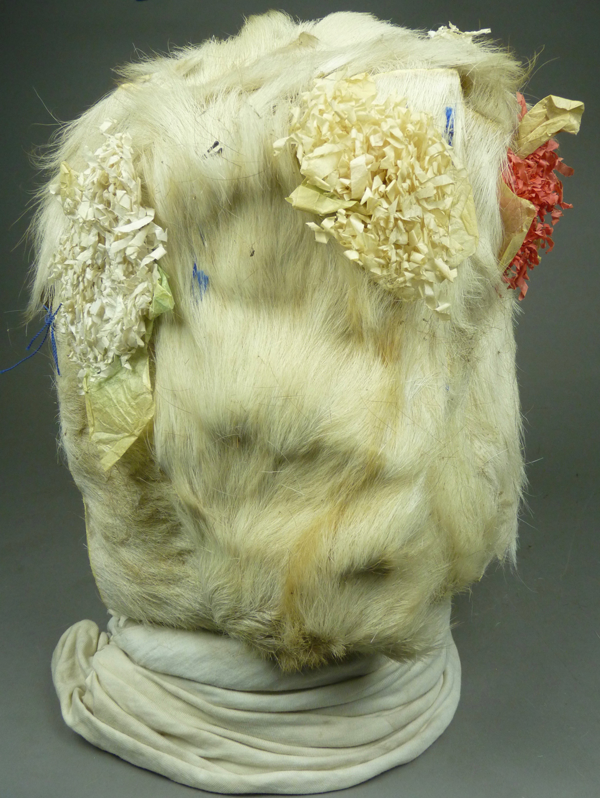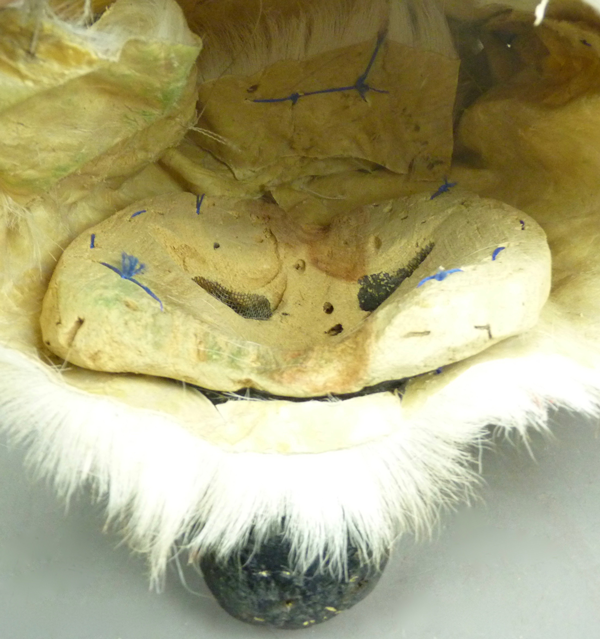Today we will examine three Judio masks that were collected by a Tucson tourist/collector at the conclusion of the Easter 1995 fiesta in Jahaura, Sinaloa, a Mayo village that is about 10 miles east of the Rio Fuerte, I obtained them 10 years later.
The first of these masks is another that seems transitional (like the final mask in last week’s post), a face plate mask that has the vision slits of a traditional Mexican mask, rather than the screen covered vision openings that are more traditional, but yet another example of the female face plate masks that we saw in last week’s post; we have them to compare to this one.
This would seem to be a Caucasian face.
Here are some more YouTube™ videos of Sinaloa Mayo Judios in action. In the first, note the traditional masks made using only goat hide that dance along with others with mask-like faces. Keep your eyes open for a Judio wearing a Red Teleubby™ mask (representing the Teletubby “Po”).
https://www.youtube.com/watch?v=2EZO88krlFA
The making of the traditional style of mask (scroll down in article for the video).
In this third video you will see more masks like those in the first video.
https://www.youtube.com/watch?v=zBxkaDPFelY
This mask has a cord loop for hanging.
The back view reveals that the cowl is constructed by lacing together the two sides and then pulling a top flap over the top of the back.
This face plate is 7½ inches tall and 5 inches wide. The cowl is 10 inches tall.
Looking up into the cowl from below, one sees that this face plate has been stitched to the edges of an opening in the front of the cowl, and that the back of the face plate is stained from contact with the wearer’s sweat, just as with ordinary face masks.
The second Judio mask from this group has a wooden face that reminds me of masks from other places in Mexico that are worn by Moor figures in the Danza de los Moros y Cristianos. There are bloodstains on the face as if this is a mask from a combat dance. This mask too has the vision slits that one commonly sees on masks from other parts of Mexico.
This hide cowl was constructed from a Javalina pelt. The fur was already shedding in 2005, when I bought this mask. Generally the cowls in this area are constructed using either Javelina or Goat pelts (Rosamond B. Spicer and N. Ross Crumrine, Performing The Renewal of Community: Indigenous Easter Rituals in North Mexico and Southwest United States, 1997, pages 226-227).
Due to the hair loss on this Javelina skin, one can see the running stitch that binds the skin to the face plate.
The edge of the flap from the left side of the mask is easily seen from this side view, as is also the case for the top flap.
This face plate is 8½ inches tall and 5 inches wide. The cowl is 9½ inches tall.
The overlapping flaps are also easily seen from the back.
The inside view of this mask is very similar to that of the first mask, and the face plate demonstrates the usual staining from use.
The third of these masks has the face of a Wild Boar or Javelina, while the pelt appears to be from a goat..
This mask has vision slits in the area of the eyes, but they are muted with window screen, as if a carryover from the vision openings on the cheeks that we have seen on earlier masks.
The Javelina face of this mask is dynamic and well carved.
This face plate is 7 inches tall and 6 inches wide. The cowl is 10 inches tall. There are paper flowers attached to the cowl.
As usual, the face plate is relatively flat, in sharp contrast to the dynamic projection of the Javelina’s snout. We find the expected stitches.
Next week we will examine three of these Mayo Judio masks from Sinaloa that have frankly mask-like wooden inserts.
Bryan Stevens

